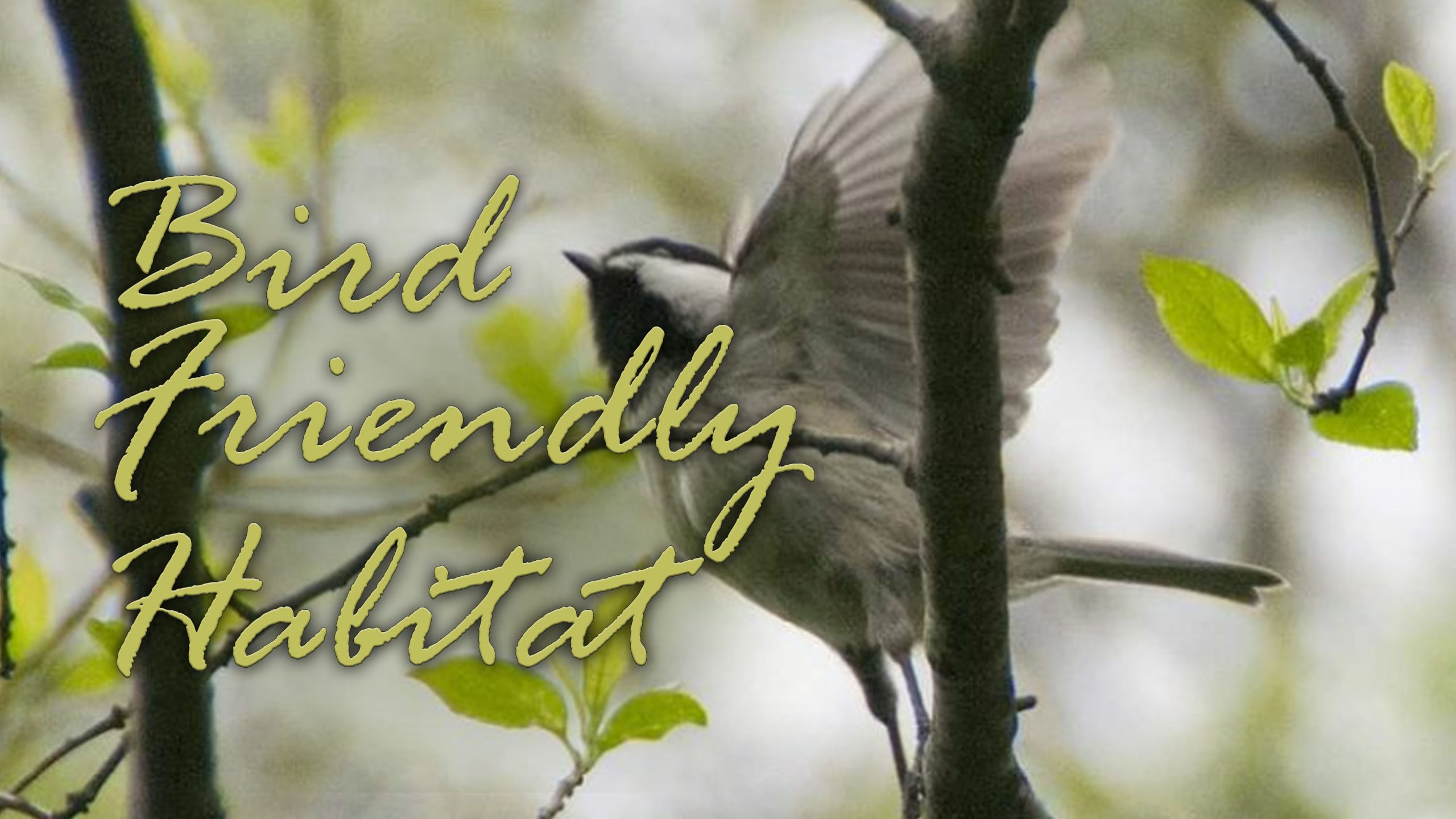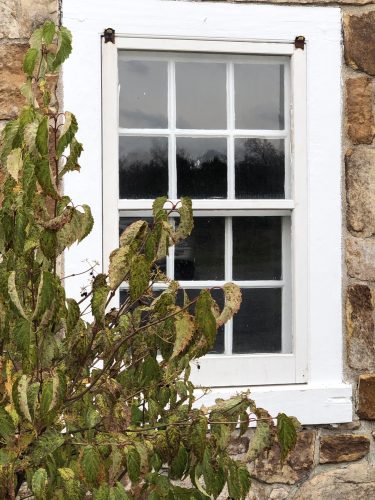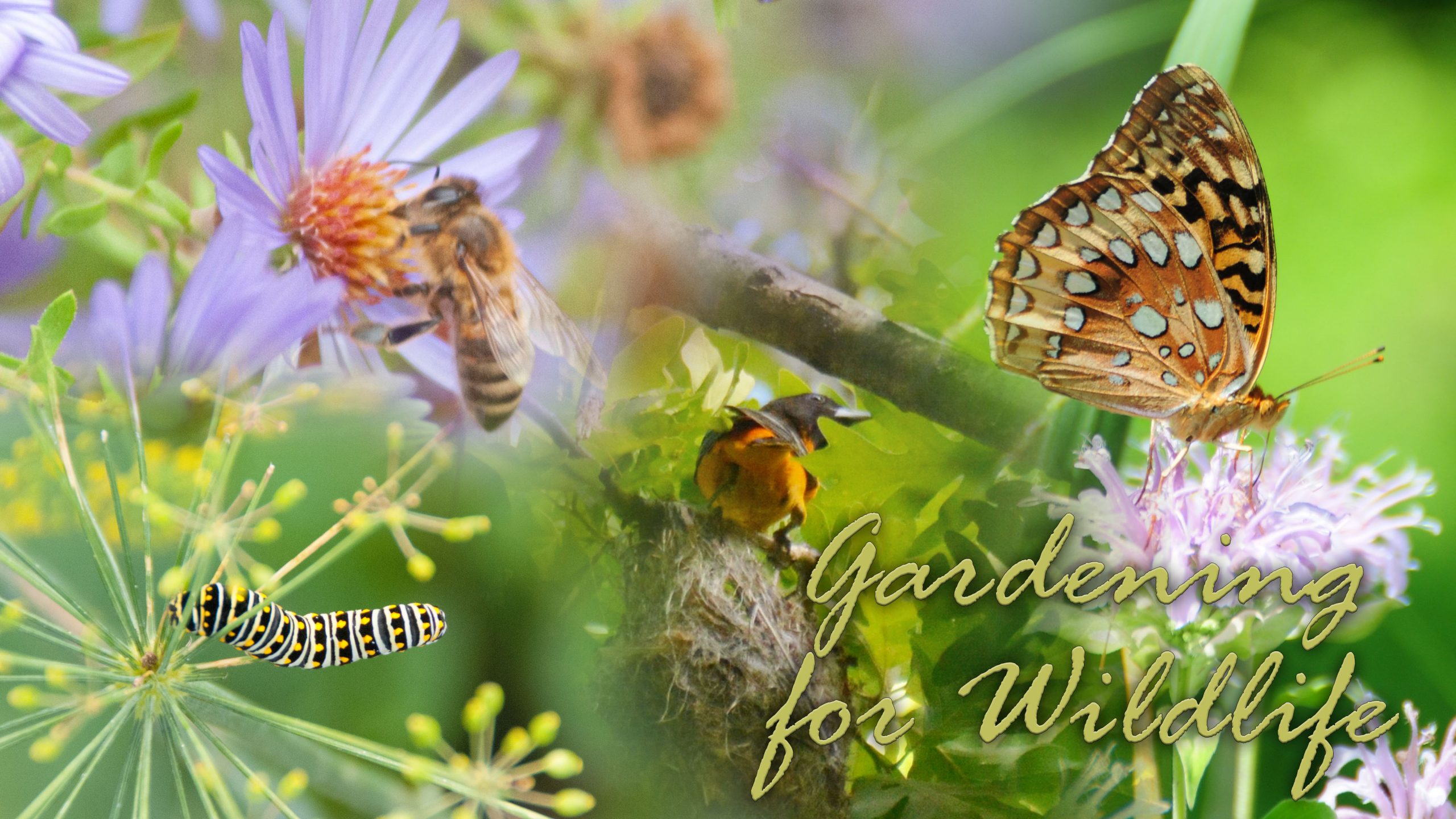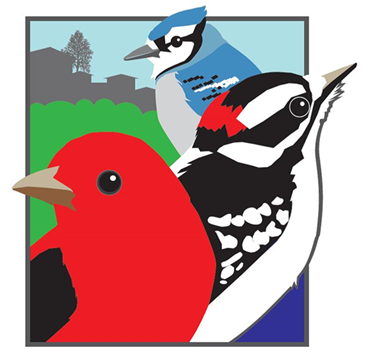Wildlife-Friendly Habitat

Avoiding Bird Collisions
Did you know that buildings pose a deadly threat to birds due to bird collisions?
A 2014 study by the US Fish and Wildlife Service and the Smithsonian Institution estimated that between 365 million to one billion birds are killed annually by building collisions in the U.S. (Audubon.org) In fact, 44% of bird collisions occur at residences that are 1-3 stories tall.
Please check out the resources below to see how you can help birds avoid colliding with your windows.
Reducing Collisions With Glass
Preventing Bird-Window Collisions: A Discussion with Researcher Dr. Daniel Klem
Healthy Habitats for Wildlife
In order to understand what a healthy habitat for wildlife is, it’s important to be familiar with the term sustainability. A sustainable habitat is an ecosystem that produces food and shelter for people and other organisms, without resource depletion and in such a way that no external waste is produced.
Thus, the habitat can continue without external infusions of resource. Such a sustainable habitat may evolve naturally or be produced under the influence of man. A sustainable habitat is a healthy habitat.
What can be done to create healthy habitats?
These initiatives can have a major impact when done on a large scale, such as promoting energy efficiency, using eco-friendly fuels, managing municipal solid waste, providing more public clean transportation, reducing plastic use, reducing/eliminating pesticide use, supporting climate change initiatives, and habitat restoration. To effect change using these initiatives it has to be done on a large scale.
Everyone, however, can create habitats on a smaller scale that benefit wildlife and ultimately people. Every successful habitat, large or small, needs food, water, shelter, and space for breeding or to allow various species to live together. The use of native plants is a key component of a healthy habitat and the foundation for a successful habitat.
What is a Native Plant?
It is a species naturally found in your area.
Plants introduced from other regions of the United States or other parts of the world are called exotics. Native plants have evolved in your region over the course of hundreds of thousands of years. These plants thrive in the local soils, rainfall levels, weather, and climate conditions. Every region has different native plant communities.
Why Are Native Plants Important?
They support local ecosystems better than introduced species, primarily by supporting food webs far better than non-natives. Wildlife evolved alongside the native plants in your region and use those natives as food, shelter, and a place to raise their young. As a result, nearly every living creature on the planet relies on native plants for survival. They are the foundation of local food webs, giving butterflies, birds, and other wildlife what they need to survive. Plus, native trees and flower beds typically require less fertilizer and water than lawns, saving you time and money!
Healthy Habitat Resources

Gardening for Wildlife
Resources Designed to get you Outside Creating Healthy Habitats
General Wildlife
Bird Habitat
Gardening Help
Bird-Friendly Habitat Recognition Program
The Bird Habitat Recognition Program recognizes individuals who strive to nurture birds by providing elements to support their needs. To be a part of this program and be recognized, you do not need a large property. You only have to have the essentials available, namely food, water, shelter, and space available for nesting (eg. birdhouses). This can be done on a small patio and even a balcony.
You also want to have, if possible, native plants available that can benefit birds. When birds migrate from the south in the spring, and back to the south in the fall, they need places to stopover to get food and become energized to continue. Birdfeeders can help with this, or having native plants available is even better.
If you have a larger property, you can incorporate native plants on a bigger scale to meet their needs. The important thing is to help birds in whatever way you can and the take away message is that you do not need a large property to do this.
The Bird Habitat recognition program recognizes individuals committed to creating a bird-friendly environment. The links below will provide you with details for becoming part of this program and being recognized.
Bird Friendly Habitat

Recognition Program Details
Native Plants for Birds
